Livestock handling is a nuanced skill that hinges on understanding animal behaviour and employing effective techniques. Two crucial concepts in this domain are flight zones and the point of balance. Mastering these principles is key to enhancing handling efficiency and ensuring the welfare of the animals involved.
The Point of Balance:
The point of balance is a pivotal area on an animal’s body, typically located at the shoulder. Handlers can manipulate animal movement by positioning themselves relative to this point. Standing behind the point of balance encourages forward movement, while standing in front prompts animals to back up. Cattle and sheep have monocular vision which means they have a narrow field of vision directly in front of them and a wide peripheral vision around them. This in turn influences their behaviour when approached by a perceived threat and contributes to their instinctive behaviour to move in mobs and in a circular motion around apparent danger.
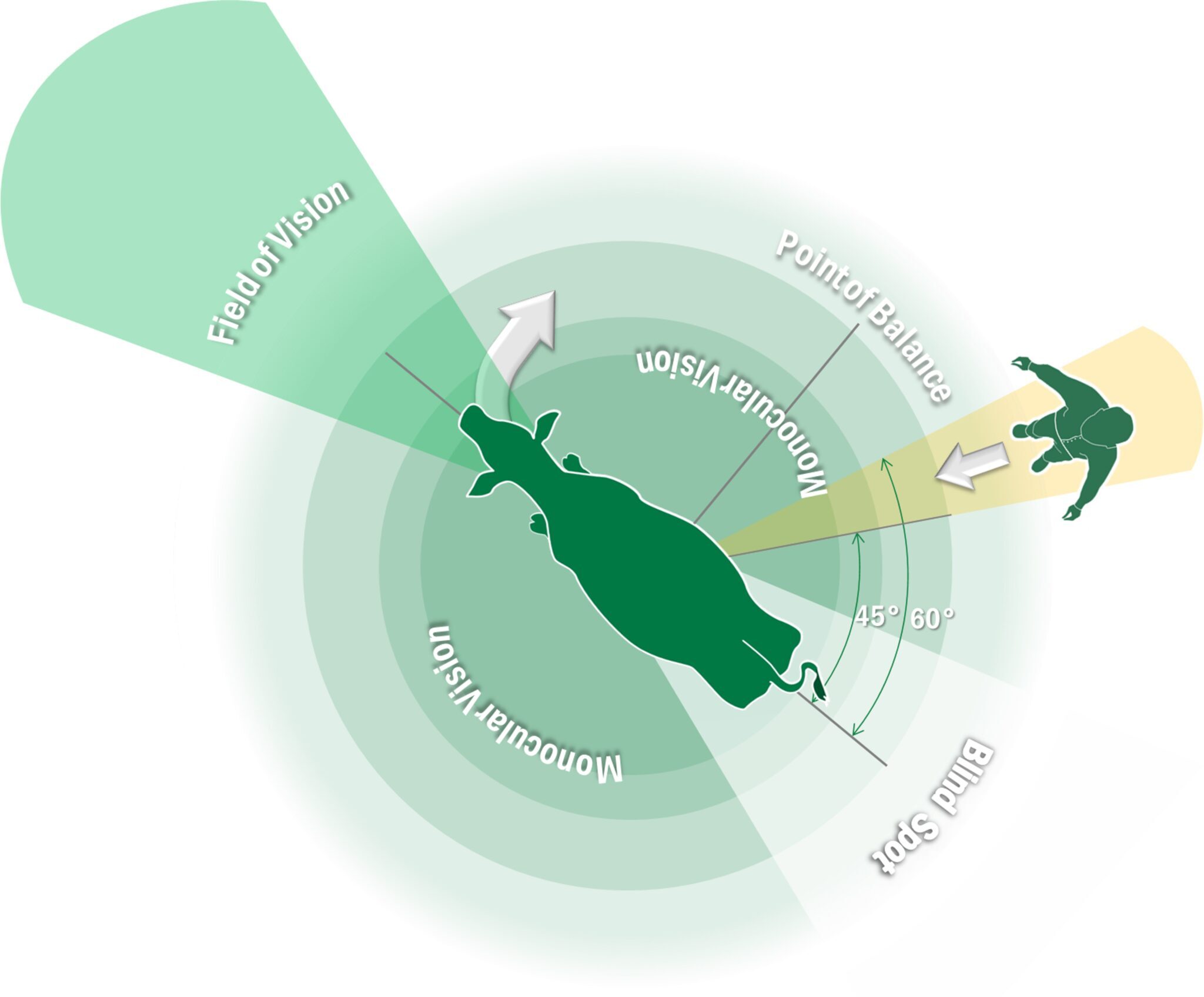
Understanding Flight Zones:
Flight zones refer to the psychological awareness around an animal that, if encroached upon, prompts the animal to move away. The size of the flight zone varies based on factors such as temperament and tameness. Sheep and cattle which are handled or exposed to humans more regularly will be less inclined to stress and move erratically, while livestock which are rarely exposed to humans will have a wider reaching flight zone and be influenced from further away. Recognizing and respecting the flight zone of varied stock is essential for minimizing stress and injury risk during handling operations, but can also be utilized in effective stock handling facility design.
Leveraging Natural Instincts:
Livestock often exhibit a “follow the leader” instinct, making it easier to move them in desired directions. Handlers can capitalize on this behaviour by allowing races to become partially empty before filling them, encouraging animals to follow the lead into desired areas. Effective handling involves recognizing signs of both good and bad movement in livestock. Good movement entails smooth, cohesive motion in the desired direction, while bad movement may include panic-induced behaviours or animals refusing to move as a group.
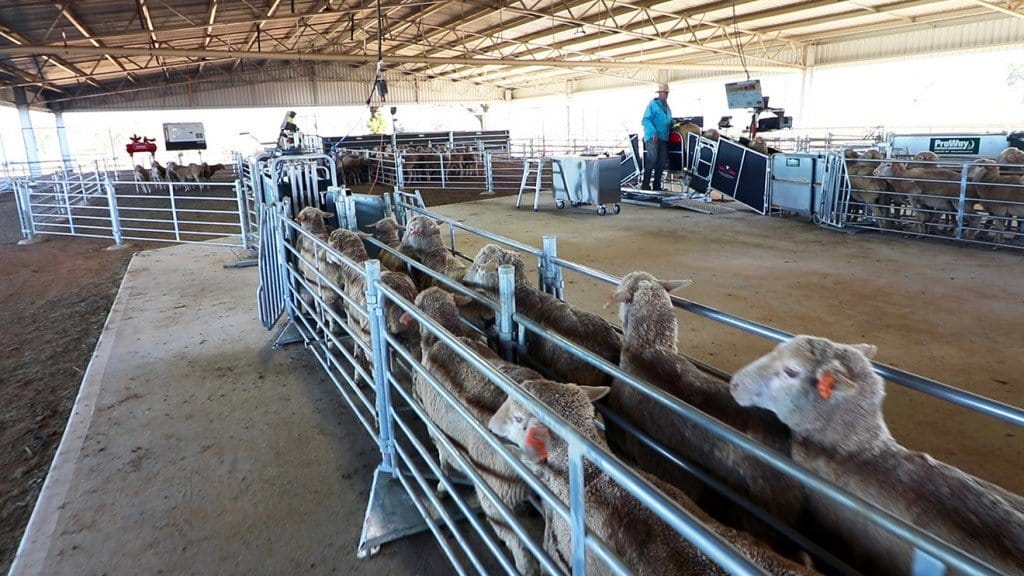
Incorporating animal behaviour through effective design:
Corrals should be designed to minimize stress by taking into account the natural movement patterns of sheep and cattle.
Gate locations should be strategically located to minimize the need to push cattle against their natural instinct. ProWay gate locations, length, and accessibility allow handlers to effectively move sheep or cattle by positioning themselves at the point of balance and influence stockflow. Factoring in walkways and extended gate handles can allow further control of stock flow.
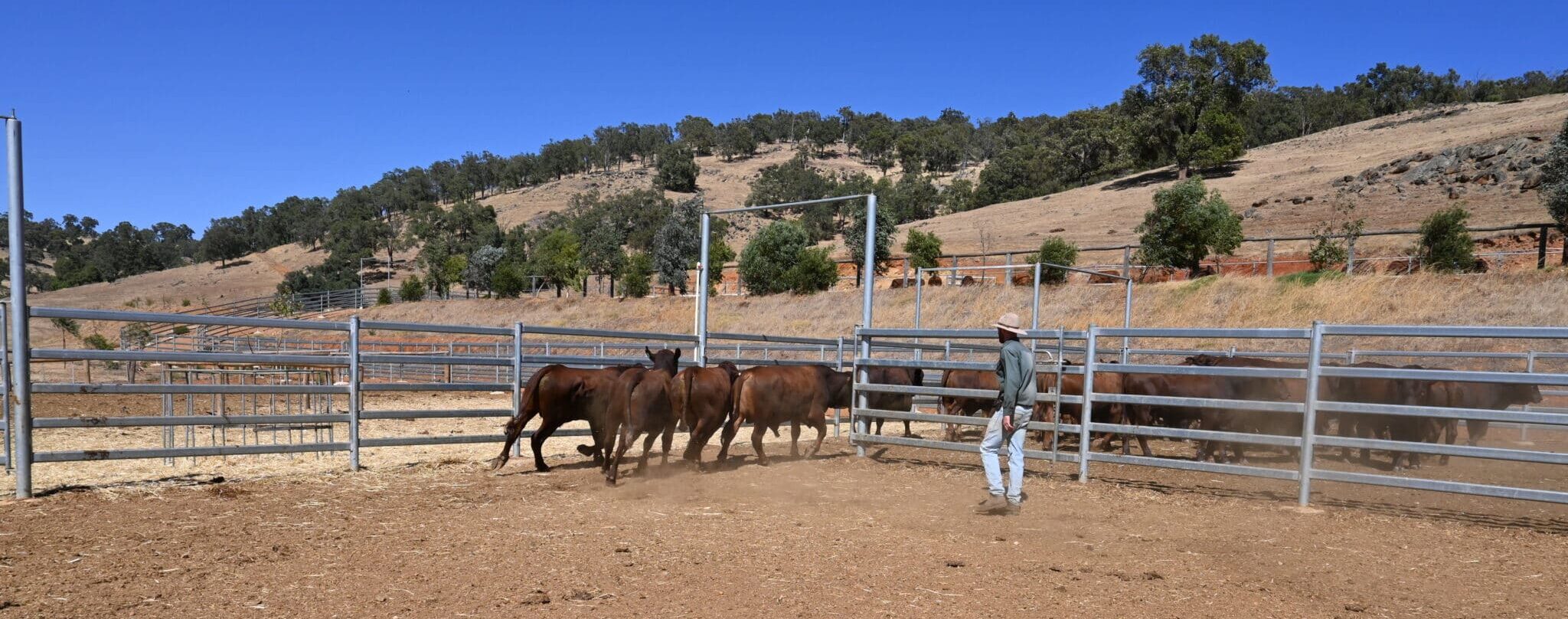
In most cases, ProWay will incorporate curved fence lines into corral designs and working areas such as bugle feeds and/or curved working alleys. Curved fence lines utilise natural animal instinct and flight zones to reduce stress and increase stock flow through the corrals. Added benefits of curved fence lines include reduced movement for the operator to influence stock flow, increasing overall efficiency. ProWay corrals allow handlers to position themselves at the correct point of balance to encourage sheep or cattle to move in the desired direction.
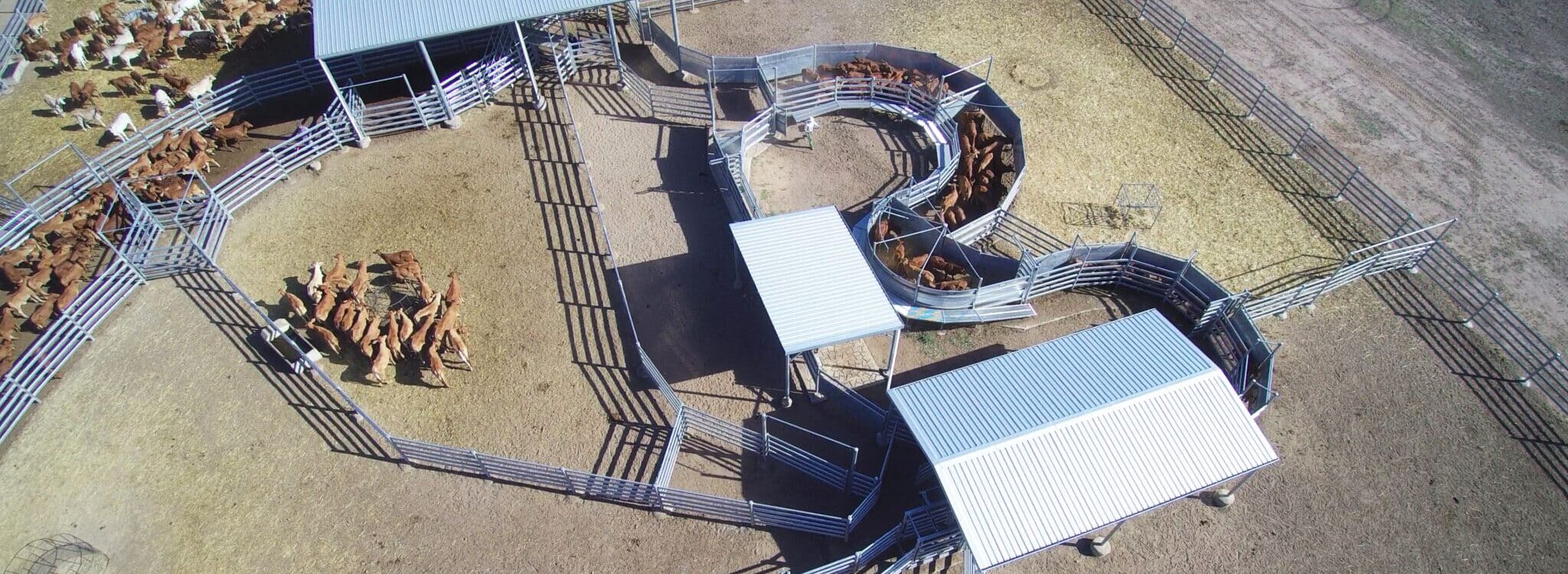
ProWay incorporate strategic sheeting and strip sheeting in high traffic zones helps reduce distractions and prevent stock from seeing outside the immediate area. This can reduce stress levels and encourage stock flow. Sheep and cattle will flow better following a leader so it’s important that there is a clear visual path in the intended direction of flow.
Yard size is also of critical importance for effective design. ProWay incorporate pen reduction ratios, or “compression ratios” as yards move towards the working area. Moving stock from a large to a small pen will cause stress and risk for both livestock and operator, and is inevitably a difficult task. By adopting a gradual compression ratio, pen sizes are reduced gradually which ensures stock move fluidly into higher pressure zones such as a sorting or working alley.
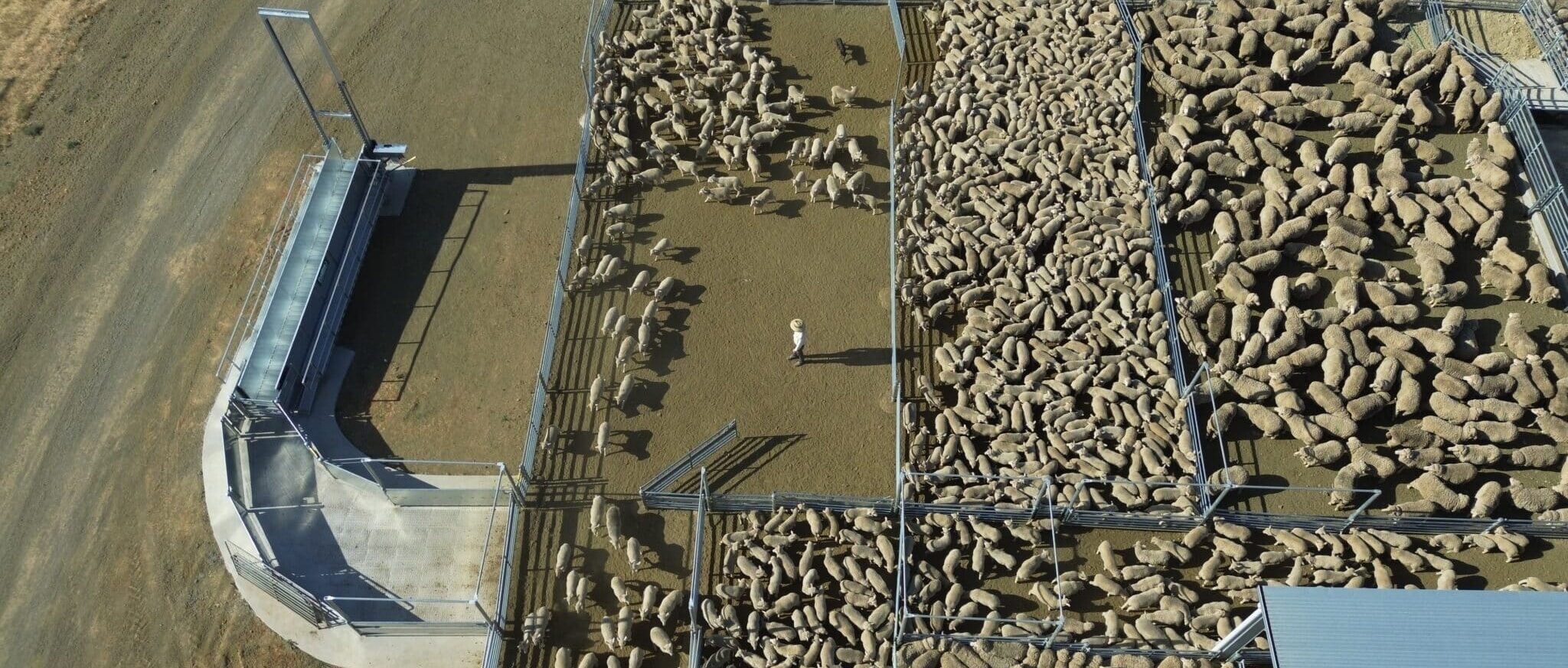
Finally utilising products and materials which have a visual barrier, are anti bruise as well as adequate structural integrity are crucial for animal safety and stress reduction. ProWay have a long standing reputation for not only providing safe products and facilities, but are built to last. Factoring in quality workmanship in the product and installation of ProWay corrals, will ensure your facilities will reduce stress and injury risk for generations to come.
Working with you:
Understanding and employing concepts such as flight zones and the point of balance contribute to livestock handling efficiency, safety and overall profitability. By applying these principles, ProWay optimise facility design which enables operators to reduce stress and create an efficient working environment.
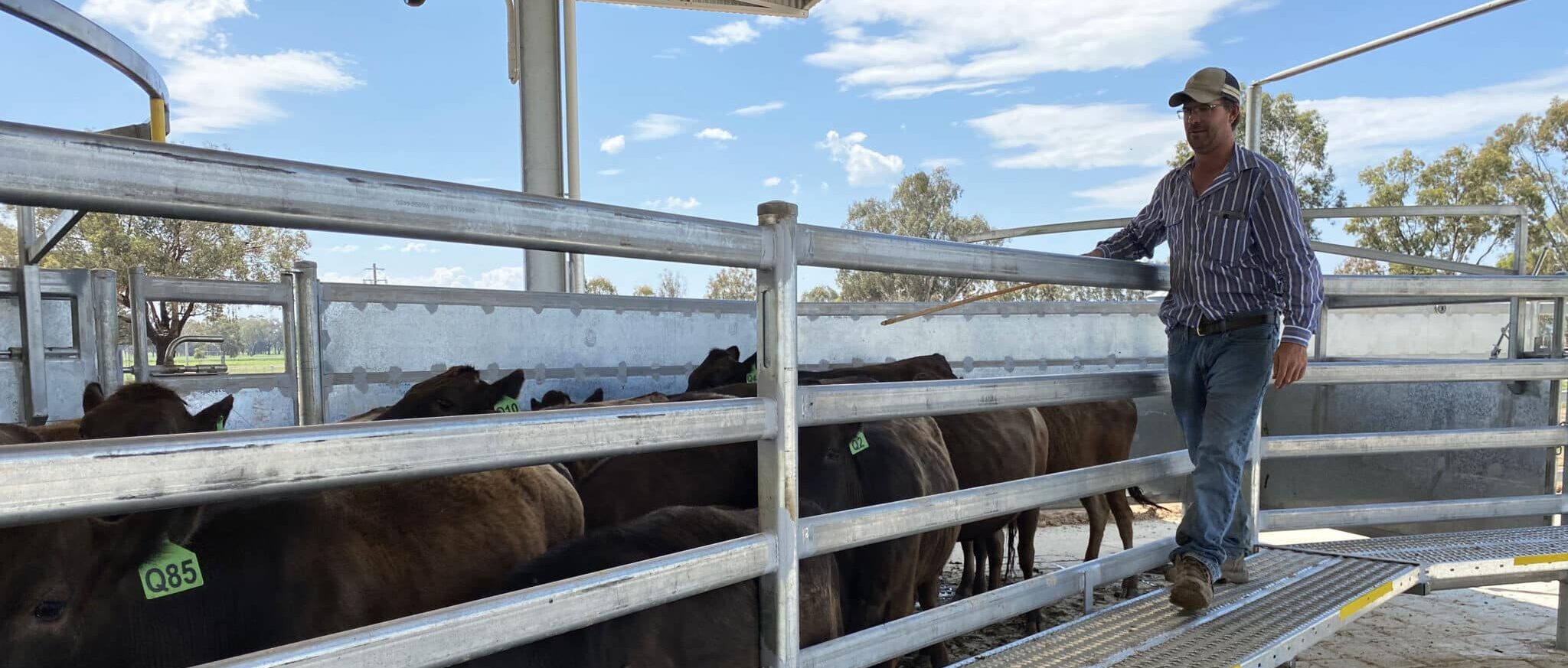
ProWay are committed to providing innovative equipment and facilities designed to optimise livestock handling operations. Through continued product innovation and facilities designed for specific operations, we continue to support livestock enterprises around America and the world.
Contact us today to learn about our livestock handling solutions and equipment.
